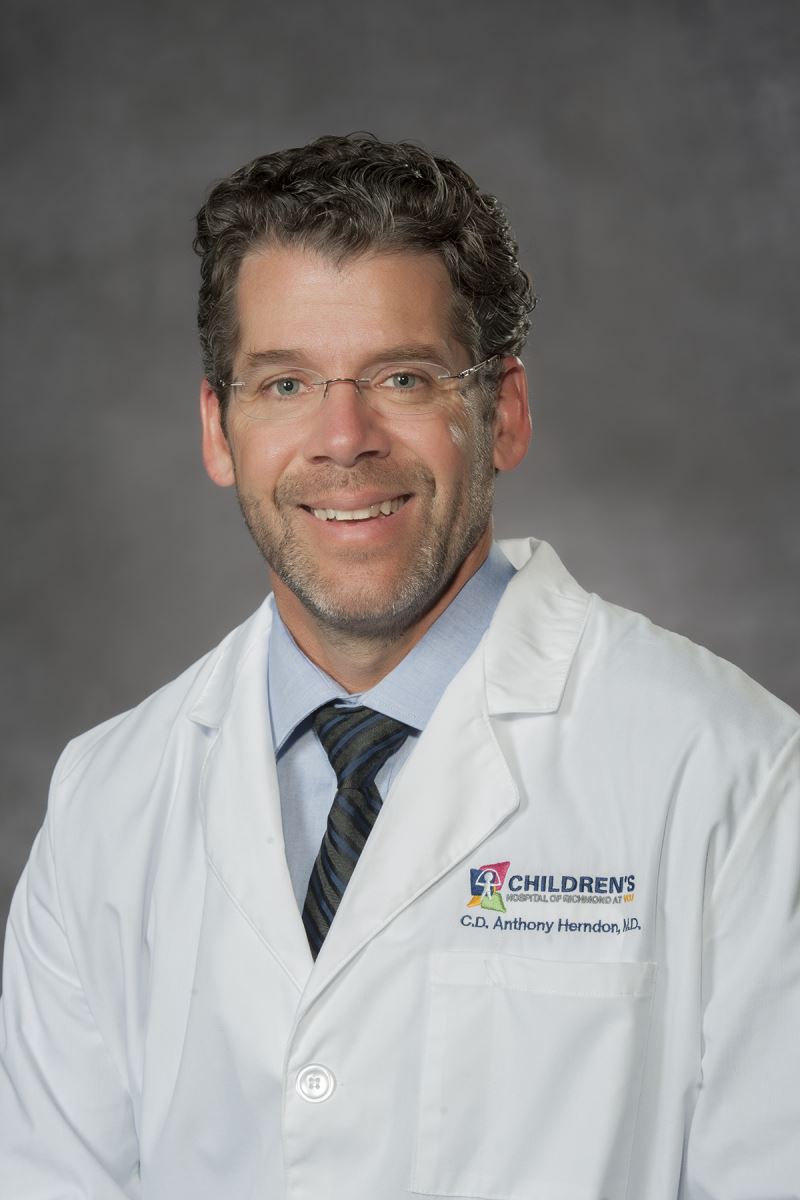
Guideline recommends a more cautious approach to interventions for babies with urinary tract dilation
 The American Academy of Pediatrics recently published a guideline for the care of perinatal urinary tract dilation, or UTD. CHoR expert Dr. Tony Herndon was the lead author.
The American Academy of Pediatrics recently published a guideline for the care of perinatal urinary tract dilation, or UTD. CHoR expert Dr. Tony Herndon was the lead author.
UTD is the second most common congenital anomaly detected in utero, only after heart defects. The condition involves swelling of the urinary tract that then doesn’t drain normally and puts some children at increased risk of urologic and kidney disease. Until recently, discovery of UTD prompted medical teams to prescribe preemptive antibiotics, urinary tract imaging and early surgical intervention in an effort to prevent urinary tract infections or deterioration in kidney function. While made with good intentions, these recommendations were not evidence-based and came with downsides of their own.
Data and collaboration are key to evidence-based care for kids
CHoR serves as the primary site for the Society of Pediatric Urology Multicenter Prenatal Hydronephrosis Registry, thanks to support from Children’s Hospital Foundation. This national registry for children with prenatal hydronephrosis provides important data and a foundation to better understand and develop best practices for the management of the condition.
“There has been a paradigm shift in management of UTD that, in part, has taken place based on the studies that have resulted from the hydronephrosis registry,” said Dr. Herndon, surgeon-in-chief and chief of urology at CHoR. “Less use of prophylactic antibiotics will mean lower likelihood of adverse effects from this treatment as well as decreased burden for a newborn family in giving a daily medication. Also, decreased need for invasive testing will be seen as we focus these tests to a sub-group of children at increased risk of disease.”
The guideline was created collaboratively by national experts in urology, nephrology, radiology and hospital medicine, the key specialties involved in the care of newborns with UTD. Tertiary care centers, such as CHoR, have the providers, research capabilities and technologies ideal for developing treatment guidelines for complex medical conditions. At CHoR we also have a multi-disciplinary approach to caring for patients with UTD, including both pediatric urology and nephrology.
Support from Children’s Hospital Foundation facilitates improved approach to treatment for UTD
The majority of children with UTD discovered prenatally won’t require surgery, but specialized care can prevent serious complications for those who do. Guidance on when to initiate this care – and what it looks like – is now laid out with patients, parents and pediatricians in mind.
“This report provides a framework for the pediatrician to educate parents on UTD, guidelines around when to make a referral for specialty care and a shared decision-making process between the medical team and parents. The document will be circulated so the best practices can be implemented throughout the country,” added Herndon. “It’s a great example of the widespread impact that can result from investments made by Children’s Hospital Foundation that really do change lives. It is not farfetched to say this document would not have been produced without their unconditional support in the hydronephrosis registry.”
“This accomplishment is a wonderful example of the many ways Children’s Hospital of Richmond at VCU and specialists like Dr. Herndon are advancing care for children, not only here in Central Virginia but throughout the country,” said Lauren Moore, president and CEO of Children’s Hospital Foundation. “Our Foundation is so proud to have supported this work, and our sincere gratitude goes to every person and business who has included CHF in their giving priorities. Their donations are what made this possible”.
Meet our urology team and find out about all the ways they care for kids with urinary conditions.
